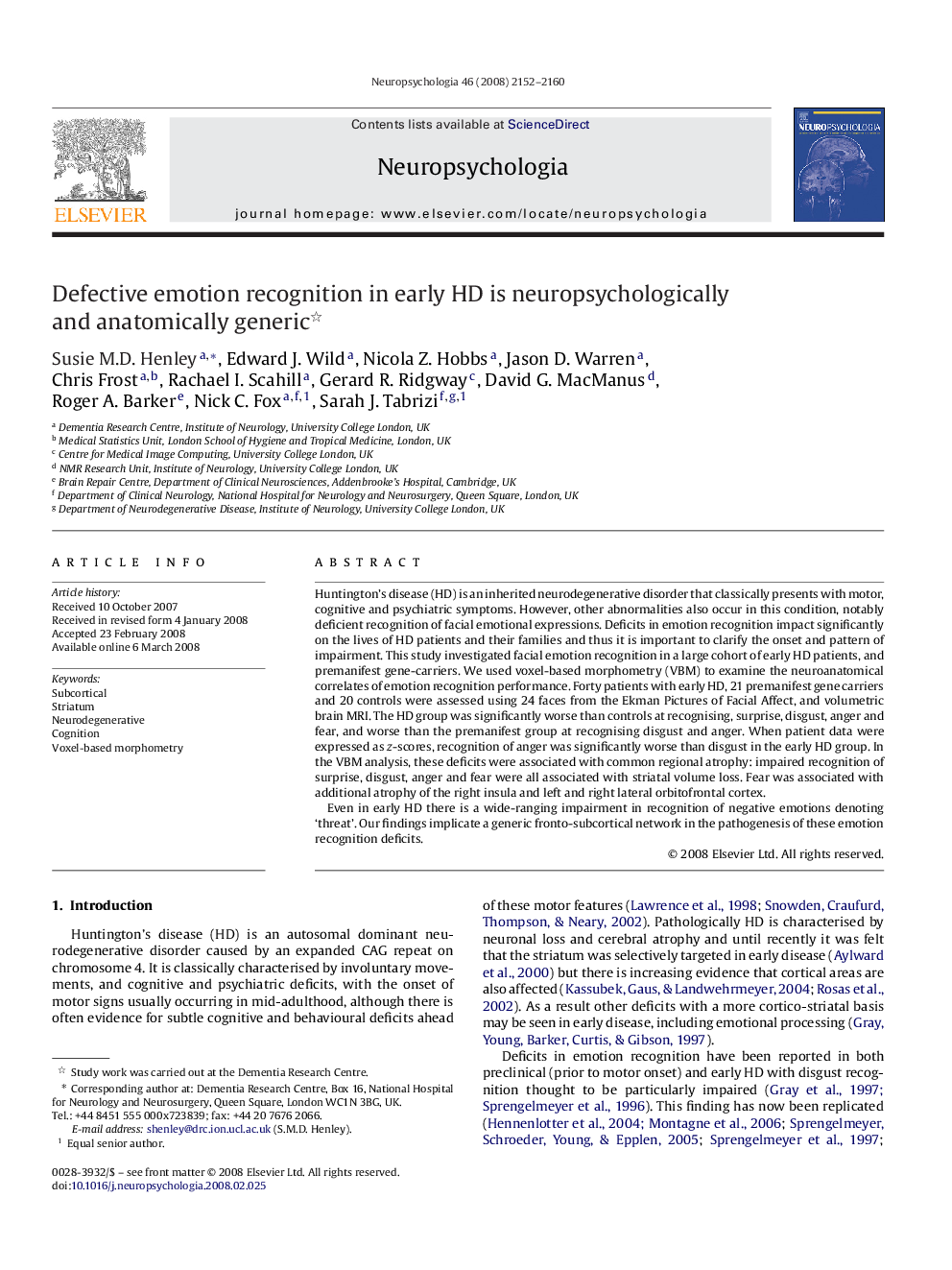| Article ID | Journal | Published Year | Pages | File Type |
|---|---|---|---|---|
| 945178 | Neuropsychologia | 2008 | 9 Pages |
Huntington's disease (HD) is an inherited neurodegenerative disorder that classically presents with motor, cognitive and psychiatric symptoms. However, other abnormalities also occur in this condition, notably deficient recognition of facial emotional expressions. Deficits in emotion recognition impact significantly on the lives of HD patients and their families and thus it is important to clarify the onset and pattern of impairment. This study investigated facial emotion recognition in a large cohort of early HD patients, and premanifest gene-carriers. We used voxel-based morphometry (VBM) to examine the neuroanatomical correlates of emotion recognition performance. Forty patients with early HD, 21 premanifest gene carriers and 20 controls were assessed using 24 faces from the Ekman Pictures of Facial Affect, and volumetric brain MRI. The HD group was significantly worse than controls at recognising, surprise, disgust, anger and fear, and worse than the premanifest group at recognising disgust and anger. When patient data were expressed as z-scores, recognition of anger was significantly worse than disgust in the early HD group. In the VBM analysis, these deficits were associated with common regional atrophy: impaired recognition of surprise, disgust, anger and fear were all associated with striatal volume loss. Fear was associated with additional atrophy of the right insula and left and right lateral orbitofrontal cortex.Even in early HD there is a wide-ranging impairment in recognition of negative emotions denoting ‘threat’. Our findings implicate a generic fronto-subcortical network in the pathogenesis of these emotion recognition deficits.
